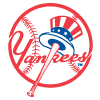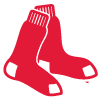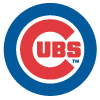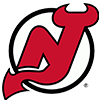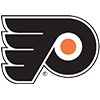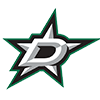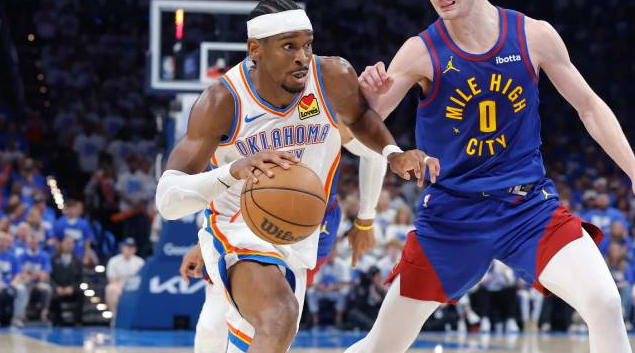It's almost Thursday night and I'm giddy. My toes are shaking in my shoes to the point that they're starting to poke holes. We're nearing NBA Draft night, which is probably the most exciting of any boring moment of the year. It will be long, but there are a few aspects of the draft guaranteed to the fans every year, occurrences that are already secure:
-- David Stern will get booed
-- Knicks fans will do something rowdy
-- College students will play the Jay Bilas-wingspan drinking game
-- And there will be a serious lack of imagination on player comparisons, which refuse to be interracial
Thursday night's draft might be the first one we've seen in years without a foreign player taken in the first round, with Evan Fournier as the only guy rumored to go at the end of the first or the beginning of the second round. The following picks are not what I anticipate to happen, but more what I anticipate would happen if I were intermittently hired as general manager of every NBA team between each pick. Some of these picks could be irrelevant by the time the draft begins. Loads will be traded. And who knows what in the world Houston has in store? But in a perfectly clean world, here is how Thursday night should go:
1. New Orleans Hornets – Anthony Davis PF (Kentucky), 6-10, 222
If you haven't watched Davis play as a college freshman, it's worth a look. You might
It's almost Thursday night and I'm giddy. My toes are shaking in my shoes to the point that they're starting to poke holes. We're nearing NBA Draft night, which is probably the most exciting of any boring moment of the year. It will be long, but there are a few aspects of the draft guaranteed to the fans every year, occurrences that are already secure:
-- David Stern will get booed
-- Knicks fans will do something rowdy
-- College students will play the Jay Bilas-wingspan drinking game
-- And there will be a serious lack of imagination on player comparisons, which refuse to be interracial
Thursday night's draft might be the first one we've seen in years without a foreign player taken in the first round, with Evan Fournier as the only guy rumored to go at the end of the first or the beginning of the second round. The following picks are not what I anticipate to happen, but more what I anticipate would happen if I were intermittently hired as general manager of every NBA team between each pick. Some of these picks could be irrelevant by the time the draft begins. Loads will be traded. And who knows what in the world Houston has in store? But in a perfectly clean world, here is how Thursday night should go:
1. New Orleans Hornets – Anthony Davis PF (Kentucky), 6-10, 222
If you haven't watched Davis play as a college freshman, it's worth a look. You might have to go all the way back to Tim Duncan's Wake Forest days to find a more dominant defensive big man. If you're truly one of the Davis extremists, you might have to set your time machine to the year 1987 to find someone better in David Robinson.
It's not just the shot-blocking ability when it comes to Davis' dominance. His defensive skills have actually made his offensive game remarkably underrated. He has the ability to get the ball out by the three-point line, take his man to the hoop with two dribbles and lay it in or dunk it. He has the ability to spot up from 18 feet. Meanwhile, there really is no ego. He was fourth on his team in shot attempts last season and that's exactly what makes Davis that much better than everyone else. It's not just the skills. It's the mentality.
How many sure-fire No. 1 picks have there ever been that don't really care how often they get the ball? You just don't hear of that. It doesn't happen. Kentucky bred the ultimate team environment last season on both sides of the floor. Six players attempted between 300 and 370 field goals on the season. Meanwhile, end-of-the-first-round guys like Marquis Teague and Doron Lamb were shooting more than Davis. Imagine once he gets his shots. A player who doesn't care about his shot total, but deserves a high one is the most dangerous type.
(I just wrote the only three consecutive paragraphs in history that were about Anthony Davis and didn't include the words "brow", "unibrow", or "shave". And no, he definitely should not shave that thing. Every superhero needs a trademark.)
2. Charlotte Bobcats – Thomas Robinson PF (Kansas), 6-9, 244
People forget that as of the end of January – and maybe even February – Robinson was actually neck-and-neck with Davis in the National Player of the Year race. He's an elite rebounder that pulled down 11.9 boards per game last season, but it wasn't just the volume in which he hit the glass, it was his efficiency.
Robinson has led the Big 12 two consecutive seasons in both offensive rebounding percentage and defensive rebounding percentage. For some reason, NBA teams seem to constantly forget that rebounding translates to the NBA as well as (or better than) any other stat. It's because of those sort of strange inconsistencies that allow the Kenneth Faried's of the world to fall all the way to the 17th-overall pick, even after four collegiate seasons of rebounding better than just about anyone in the country.
Scouts like Robinson more than Faried, however. He can hit his midrange shot and while he is not – and probably won't ever be – a top-tier one-on-one defender, his notably high motor and his superb effort make up for some of that.
3. Washington Wizards – Bradley Beal SG (Florida), 6-5, 202
You like Eric Gordon? Me too. Just think Eric Gordon with this pick.
There really is a startling amount of Gordon inside Beal's game. Their size, handle, athleticism, and shooting ability are all compatible. Both have incredible range on their jumpers, but struggled to start their freshman seasons and finished with similar three point percentages (33.9 percent for Beal and 33.7 percent for Gordon) on a high volume of attempts.
Gordon was actually more turnover-prone in his collegiate days in Bloomington, but that was only because he had the ball in his hands more than Beal, who had other guards like Kenny Boynton and Erving Walker to help carry the load.
This pick is really just what the Wizards need: A shooter, an athlete, someone unselfish who can play next to John Wall, who is still an unknown that absolutely can't put a ball in the net from beyond the arc. Shooting guards are a scarce commodity right now. If Beal can be a healthy Eric Gordon, that makes him top five at that position.
4. Cleveland Cavaliers – Michael Kidd-Gilchrist SF (Kentucky), SF, 6-7, 233
The word is that the Cavs love Harrison Barnes and that if he falls to fourth, which he most likely will, they will make sure to scoop him up. There's nothing wrong with that pick. Barnes could work well with Irving.
That being said, Kidd-Gilchrist might be the better fit here because of his athleticism, which could nicely compliment Irving's speed and quickness. MKG was pretty easily the most dominant player in the NCAA when it came to scoring in transition. Put him with a quick point guard with the court vision that Irving has and he becomes that much more dangerous.
Meanwhile, the part of the game in which MKG can really excel is on-the-ball defense. He could end up being a Tony Allen-esque defender. With a 7-foot wingspan and arms that are only exceeded in length by his name, he could end up fitting well in Cleveland.
Speaking of which, if he really does blow up and become a legitimate NBA All-Star, imagine the banners on the side of the building. "Kidd-Gilchrist" is just too long of a name. It's not marketable. If you look at every hyphenated star, there's something that makes the name marketable. Maurice Jones-Drew still only has two syllables in his last name. It flows. It works. Meanwhile, other hyphenites like Shariff Abdur-Raheem and Kareem Abdul-Jabbar have the Cultural Waiver. We have to stop talking about shaving the brow in Lexington and start talking about shaving the Kidd. Mike Gilchrist stands a much better chance than Michael Kidd-Gilchrist.
5. Sacramento Kings – Harrison Barnes SF (North Carolina), SF, 6-8, 228
Barnes could have left after his freshman season and gone in this same range. Ultimately, it won't really matter. He did actually improve as a sophomore in Chapel Hill, making a point to go to the basket more and stop shooting so many threes. As a result, he saw his efficiency notably affected.
Barnes got to the line at a much higher clip, attempting 195 free throws in 2011-12, compared to only 124 in his freshman season. With that mentality, he stopped attempting so many threes, bringing his total down from 195 to 137. The sophomore version of Barnes is probably more of what to expect as a pro.
6. Portland Trail Blazers (from Nets) – Damian Lillard PG (Weber State), 6-3, 189
The "I've Never Heard of This Guy" logic from the casual fan has always bothered me. Yes, Weber State couldn't make it out of the Big Sky into the NCAA Tournament, but that's hardly Lillard's fault. He had to do everything: shoot, penetrate, distribute, handle the ball. He was the Wildcats' Swiss Army Knife merged with their Krazy Glue, which when combined actually leads to quite an ineffective appliance.
So Lillard didn't play a lot of postseason basketball. He did, however, do everything else. He was notably efficient, shooting 46.7 percent from the field, 40.9 percent from three, and 88.7 percent from the line. He averaged 24.5 points per game – second in the nation – on only 15.5 shots per game. He got to the line eight times per game.
Raymond Felton and Jonny Flynn are free agents – not that those guys were realistic 2012-13 starters regardless – and Portland needs a point guard for the future. Lillard could pair well with LaMarcus Aldridge and Nicolas Batum to make a strong core. Newly minted general manager Neil Olshey loves athletic point guards that get to the rim. A Lillard pick could fit his scheme well.
7. Golden State Warriors – Dion Waiters SG (Syracuse), 6-4, 221
Waiters never started a game in his college career, but that doesn't really matter. In fact, it might help him considering the role he played in college – winning NCAA Sixth Man of the Year – could be the one he is best suited for at the NBA level.
You have to ignore the college numbers when it comes to his situation. Playing behind more experienced guards in Brandon Triche and Scoop Jardine on a Syracuse team loaded with depth contributed far more to Waiters' point total than his actual ability to score. Put him in a situation like Lillard was in and he has the same numbers. No team was deeper than the Orange this year and Waiters' stats had to suffer because of that.
He is explosive off the dribble, gets to the hoop at will, finishes great at the rim and has even shown the ability to heat up from long range – exemplified most when he hit seven three-pointers against Cincinnati in the Big East Tournament. In actuality, he is not much different of a player – in both style and skill – than Dwyane Wade was at Marquette.
Now, take a deep breath. Waiters isn't Wade. If he were, he'd be the first or second pick in this draft, not the seventh. That being said, Wade exceeded the expectations that were set for him when he was heading out of college and Waiters deserves about the same ceiling that we thought would be appropriate for Wade in 2003.
8. Toronto Raptors – Jeremy Lamb SG (Connecticut), 6-foot-5, 179
DeMar DeRozan is an athlete that can score and get to the hoop, but in his first three years in the league, he has shown that he might never be able to develop any sort of outside shot. That leaves Toronto to decide between the two best remaining perimeter scorers, Jeremy Lamb and Austin Rivers. Lamb, however, is probably the better fit.
Lamb has long range on his shot, as does Rivers, but he seems to be a significantly better decision-maker at this stage of his career. He probably would have been a lottery pick last season as well after his magical freshman NCAA Tournament run. The knock on Lamb is that he isn't yet a sheep. He is one of the scrawniest players in this draft class – if not the scrawniest of them all. On a meaty day, he looks like Reggie Miller on Atkins. But he can shoot, is incredibly long (6-11 wingspan), and has shown the smarts and guts to succeed in the big moments.
9. Detroit Pistons – John Henson PF (North Carolina), 6-10, 216
There's something about Henson that makes him particularly susceptible to the man-crush. It could be his extraordinary length (7-5 wingspan). It could also be his exemplary intelligence on both the offensive and defensive ends of the floor.
Essentially, Henson was just a poor man's Anthony Davis as a junior in Chapel Hill this past season. He is a dominant shot blocker and rebounder, he can hit a 15-footer, and can help protect the paint in Detroit. He would be the perfect type of player to stick beside Greg Monroe, another skilled big. The one issue with this fit is that Henson plays best with a good point guard. In college, he lucked out with Kendall Marshall, maybe the best passer in the nation. Because of that, he found himself slap-happy, getting the chance to take a slew of open jumpers. That might not be the case in Detroit.
10. New Orleans Hornets (from Timberwolves) – Royce White SF (Iowa State), 6-8, 261
Here's my favorite player in the draft. White's persona couldn't have been more exaggerated during the draft evaluation process. First off, there's the flying. Yes, Royce White is afraid to fly, but I can't count how many people I have heard suggest the proposition, "Do you really want 41 games of Royce White? Is that good value?" Fans and media legitimately think he won't be going to road games, but apparently those same fans and media never watched an Iowa State road game this year to notice that he hopped on a plane and played in each one of them.
White didn't even seem to be bothered by being on the road. His points per game went up in road and neutral sites in his lone season at Iowa State. His rebounds per game total was actually FOUR rebounds better – such a large difference that it deserves a font-change along with capitalization. He needs to develop a jumper, but he has the same body as LeBron James and is the best ball-handler, the best decision-maker, and the best passer of any non-guard in this draft. He is a smart player that always seems to be at the right spot on the floor, a guy who is dangerous when going to the rim. The free throw shooting is well too low, but he has the natural ability to at least improve upon that and if he hits his ceiling, teams inside the lottery will regret passing on him.
11. Portland Trail Blazers – Andre Drummond C (Connecticut), 7-feet, 279
The good: Drummond looks like he was created in a lab somewhere. He has a massive frame, broad shoulders, and a 7-6 wingspan. His max vertical is 33.5 inches, well above average for centers his size. That means there are times he is capable of getting about 23 inches over the rim on dunk attempts. He is only 18 years old right now – though he will be 19 once the season begins – and has loads of room for improvement.
The bad: The reason Drummond has so much room for improvement is because he struggled so mightily at times in his freshman season at Connecticut. He is remarkably raw on both ends of the floor and shot one of the worst percentages in the country from the line: 29.5 percent. On top of that, Drummond often makes poor decisions. He frequently seems unaware of game situations and where he should be on the floor. He will openly dog it and just not play as hard as he should. Any team that drafts him has to ask itself, "If this guy wasn't consistently playing hard all the time when he was trying to get paid, can we get him to play hard after he's already gotten his money?"
12. Milwaukee Bucks – Meyers Leonard C (Illinois), 7-1, 250
This is the run of risk-filled forwards and centers. White and Drummond are both dicey for their mentalities. People might be dubious about Leonard's future for the same reason. For a seven-footer, Leonard almost plays like a guard at times. He is lanky and has nice touch on his mid-range jumper and hook shot. He is better than a 70 percent shooter at the line and is a relatively skilled offensive player.
The problem is that he pulls the Houdini act all too often. For long stretches, he won't call for the ball, he won't help much on defense and he'll just stop moving on the offensive end of the floor. Scouts have attributed that to more of a confidence issue than a fitness one, but collegiate players that disappear for lengthy periods of the game deserve to be flagged for it.
But if Leonard is a gamble, then the Suns would seriously be throwing the chips to the center of the table with a guy who actually was flagged…
13. Phoenix Suns – Jared Sullinger PF (Ohio State), 6-9, 268
First, the issue with Sullinger was his weight. Now, the problem is his back. NBA team doctors red-flagged the former Buckeye after finding that he may not be able to sustain that long of an NBA career. Most drafts now have Sullinger going somewhere in the 20s, but if any team is going to take a risk on him, wouldn't it – and shouldn't it – be the Suns?
Phoenix has been heralded as having the best training staff in the NBA – and maybe in all of American sports – for years now. They revived Grant Hill, maintained Steve Nash, and kept Vince Carter alive. Now, I'm no doctor, though I play one in real life, and it's supremely possible that the Phoenix training staff takes a look at Sullinger and determines that there is nothing they can do to help him. If that's so, this pick isn't relevant. But if that training staff thinks it can do work with Sullinger, he could be tremendous value – think an Elton Brand ceiling – at 13. If the injuries continue, however, say hello to Michael Sweetney 2.0.
14. Houston Rockets – Kendall Marshall PG (North Carolina), 6-4, 198
DraftExpress.com has Marshall's best case scenario pretty accurately rated as Andre Miller. He has a load of above average skills, but he doesn't really do anything great – that is except for pass in transition. Marshall is actually one of the best collegiate players in recent memory at getting an outlet pass, finding a player 50 feet down the floor, and making a perfect, leading pass to a receiver down the court. He plays the game like a quarterback and is quite simply the best pure point guard in this year's draft.
He is smart, doesn't make bad decisions, and is actually a better shooter than for what he gets credit. His range won't extend all the way out to the NBA three point line, but he is actually a better shooter than some other elite point guards when they came into the league, such as Rajon Rondo. He doesn't have a particularly explosive first step, but he does have that uncanny ability always to make the right play. With the intelligent way he plays the game, his floor is actually higher than any other point guard in this draft. Barring injury, I can't really see any way he could be worse than a Brevin Knight type of player.
15. Philadelphia 76ers – Perry Jones III (Baylor), 6-11, 234
Jones has become synonymous with the term "soft" among college basketball critics, who are quick to mention the fact that Jones vanishes from games in the most important moments. He struggled in some of the biggest games he played against the best teams in the Big 12, namely Missouri and Kansas. That being said, Jones has the body and physical ability to be better than the 15th overall pick in this draft. He just hasn't consistently shown it.
He is long, athletic and boasts a 38.5-inch max vertical. At 6-11 with that kind of jumping ability and the skill to knock down mid-range shots consistently, he is the type of player Philadelphia needs. The 76ers are a team with a cluster of guys who score the same way. Andre Iguoudala, Lou Williams, and Jrue Holliday are all similarly styled offensive players. Philly could be able to improve on the offensive end with the help of a different type of offensive player. That's why Jones makes more sense for them than a player like Austin Rivers.
(Picks 16 through 30 will be posted Thursday. To see the entire mock draft and prospect rankings, click here.)












